What if...we remembered?
A week at Pun Pun Eco-village & Hin Lat Nai on a journey of remembrance through living in right relation with the earth.
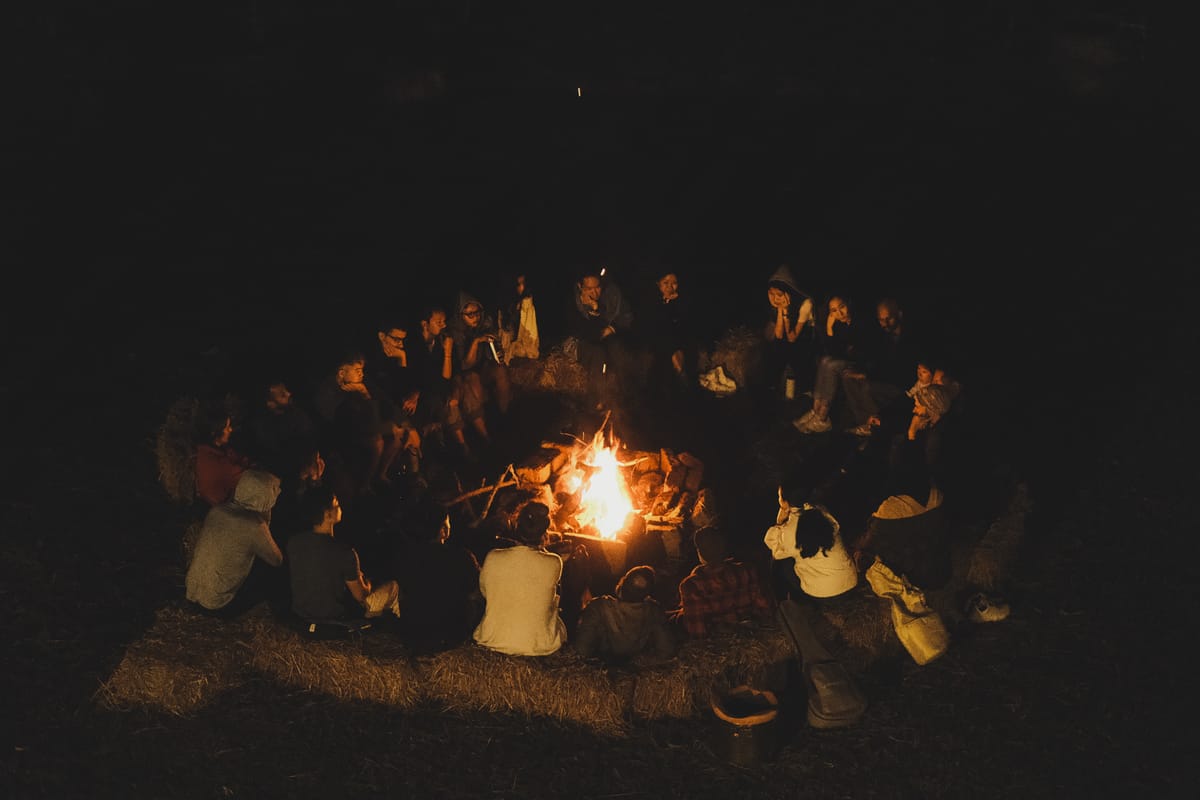
The root meaning of the word 'remember' comes from the Latin word memorārī, which relates to being mindful or recalling. At a deeper level, we can understand remember as 're'-'member' – i.e.
to put back together something that was originally whole and has since been dismembered or separated.
Greg Pettys reminded us, as we sat in a circle to hear a story about a Raggedy boy from long, long ago...or maybe just recently... about remembering and to have a conversation about Seeds, life, and mythology at Pun Pun Eco-village on the outskirts of Chiang Mai.
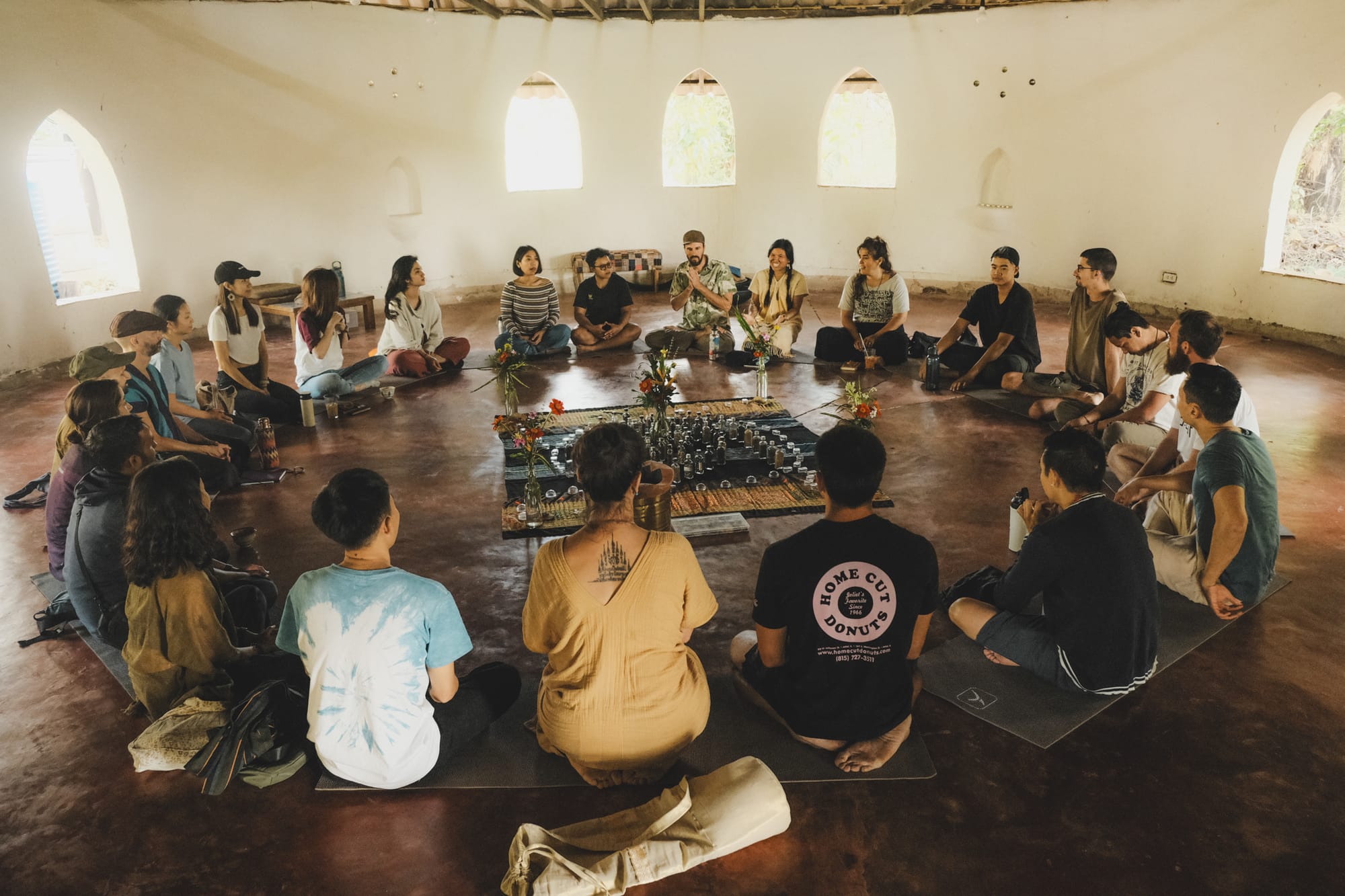

story and singing circles at Pun Pun (photos by Chan @lazy gotji)
This was my second trip to Pun Pun in a few months. This time I was here to join Greg and Ramphai who facilitated a journey exploring the question What if...we re-cultivate a deeper understanding as to how our external relationships with Earth impact our relationships with our inner self through the experience of the P’gakenyoa indigenous community.
The P'gakenoyoa, also known as the Karen in Myanmar, are one of the few communities left in Thailand living in right relation to the land. We spent a few days at the Hin Lat Nai village, close to Chiang Rai where they live in a forest village, on the fringes of modernity. The Hin Lit Nai are a case study of indegenious resistance keeping many of their cultural memory of relationship to nature intact in the face of industralisation and Thai nationalism.
The week was a meeting of beautiful and powerful people who collectively opened up to embody the spirit of What if. We partook in rituals and practices that gradually, and sometimes suddenly, shifted the ground on which we walked. We held space for compassion, care, and reverence for nature – but also for grief and sadness for all that we have forgotten and the feelings it arouses as we, bit by bit, collectively started to remember.
Living in right relation
Living in 'right relation' to the land is a phrase that came up throughout the course. To live in right relation is to be in an intimate relationship with the ecology of life where you reside. It is to know the types of plants that provide nutrition and healing, the habits of animals, and to hold deep reverence and gratitude for the life they enable. It means taking only what you need, with permission, and knowing the stories, rituals, and ancestral memory of the life that once walked this land. It is to be in conversation with the trees and the bees.
Living in right relation, Greg reminded us, is essential to remembering. As I received this information, I couldn't help but feel a sense of humility and sadness for how much I did not know. The feeling that for all my travels, academic degrees, and professional accomomplishments, I knew very little about living in right relationship to any piece of land on this planet.
Spending a few days at the Hin Lat Nai village, where the P’gakenyoa people who opened their home to us to share their knowledge and energy with us, we had opportunities to evoke memories hidden inside our cellular memory.
The village has no grid electricity with just a few dim lights relying on solar energy. Life here rises and sets with the sun. A pitch darkness enveloped us at sunset and we would gather by the fire like moths to a flame for warmth and to tell stories and sing songs and chants, many in languages I had never heard, yet evoking a sense of recall of the familiar. At various points through the night I would be woken up by choruses of roosters and pigs as if the sun would not arise without their crowing (there is apparently a story of how roosters too forgot about when to crow).
The household I lived in seemed to be on a different clock. On the first night my body felt cold and disturbed by the loud humdrum of action, conversation, and music to greet the rising sun. With each day my body resisted less and I began to feel a sense of relaxation in the body. What was hiding in a blanket slowly surrendered and allowed itself to come out in rythm of the place.
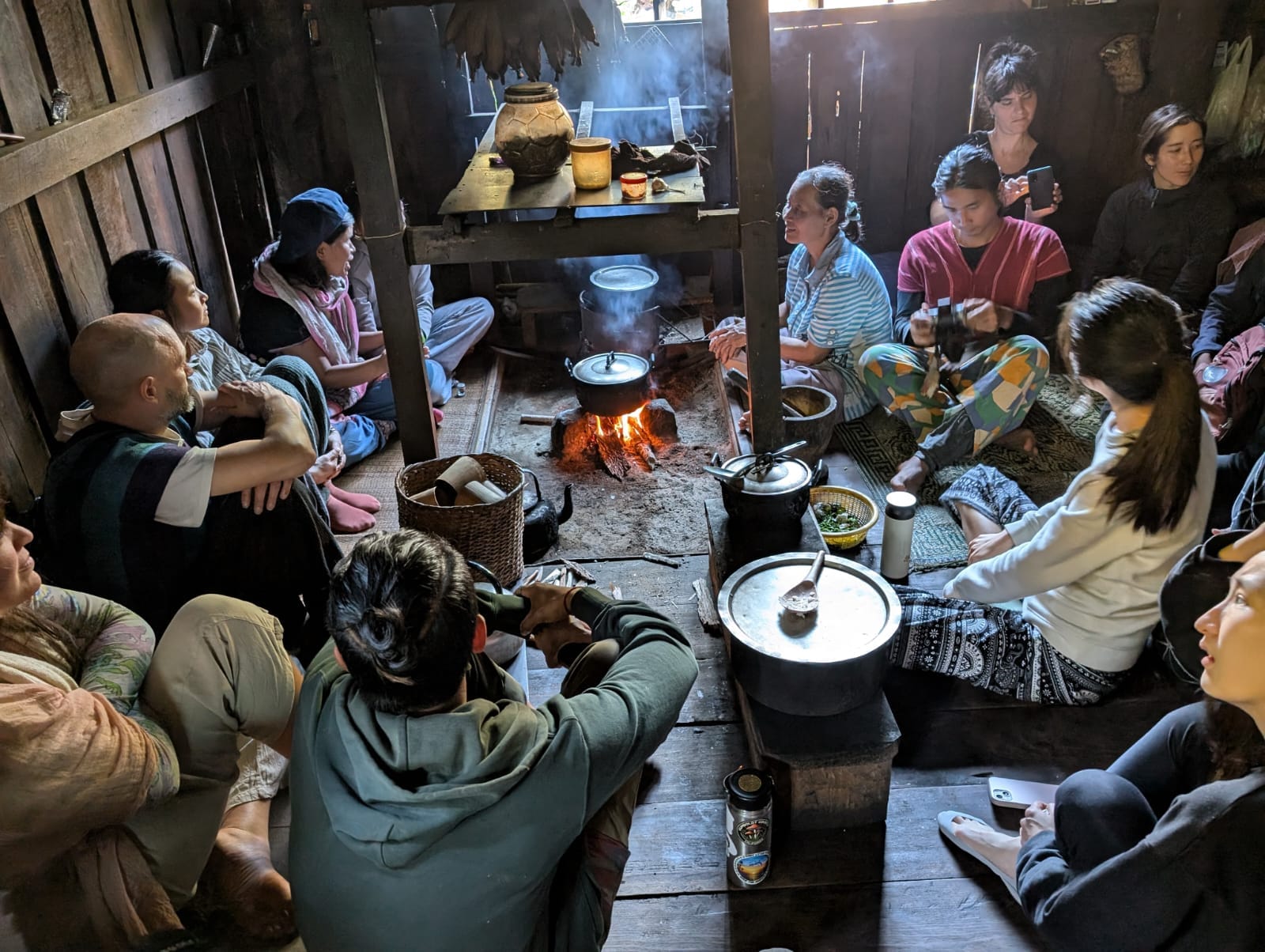
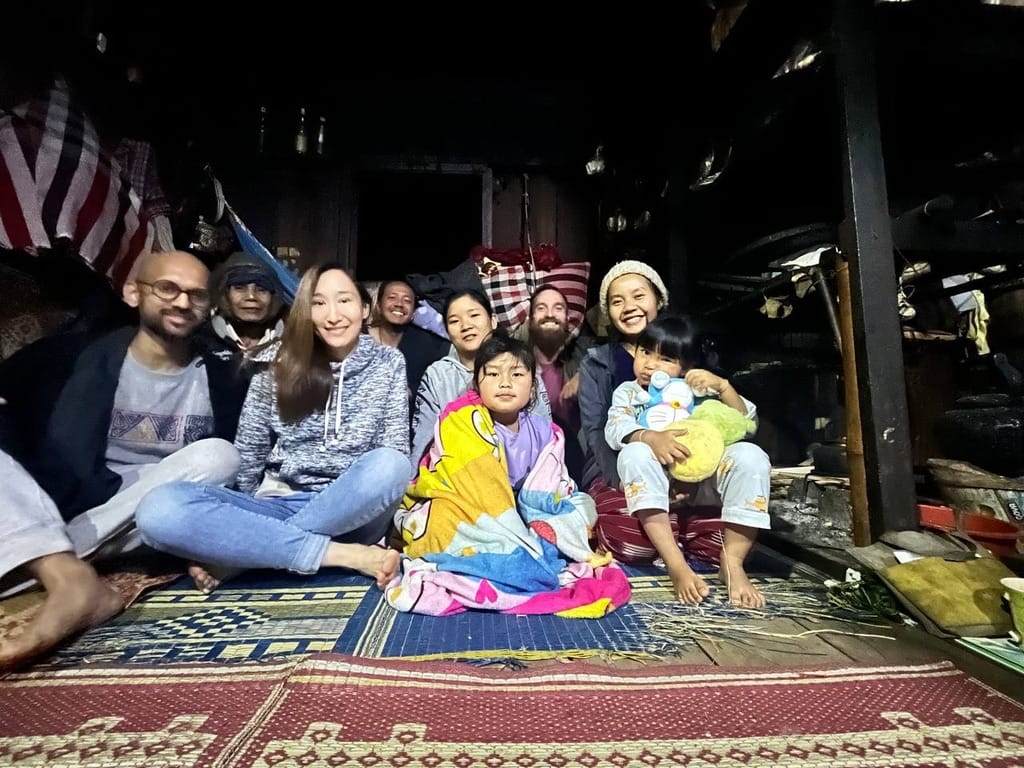
Forests embody remembrance
The P’gakenyoa people had been living in this part of what is now known as Thailand for a few hundred years. They steward about 100 acres of forest that they hold deep reverence for. When a baby is born its umbilical cord is tied to a tree as a reminder of the connection with the forest. Walking through the forest, Rumphai pointed out to us to the tree of the community leader.
Unlike us humans, Trees can live for hundreds of years or even longer. Their roots grow deep into the soil creating interconnected webs with mycelium networks connecting the forest. Their labour is invisible and unseen by our 5 senses or our economic systems. Their sentience and care at realms too subtle for our busy minds to tune into. Yet they stand strong and keep us together.
In October, northern Thailand experienced the largest flood in recorded history. Lek,22, one of the youth elders of the village (the P’gakenyoa intentionally place the youth in leadership positions) recalled how the stream running through the village turned into a flood for a few hours carrying with it logs and debris that destroyed the school and houses. She was besot with grief as were many others. Eventually when the flooded subsided and she walked the path of the flood her sense shifted into deep gratitutde. They found that in fact the trees had saved the village from even further devastation holding strong mounts of floating debris.
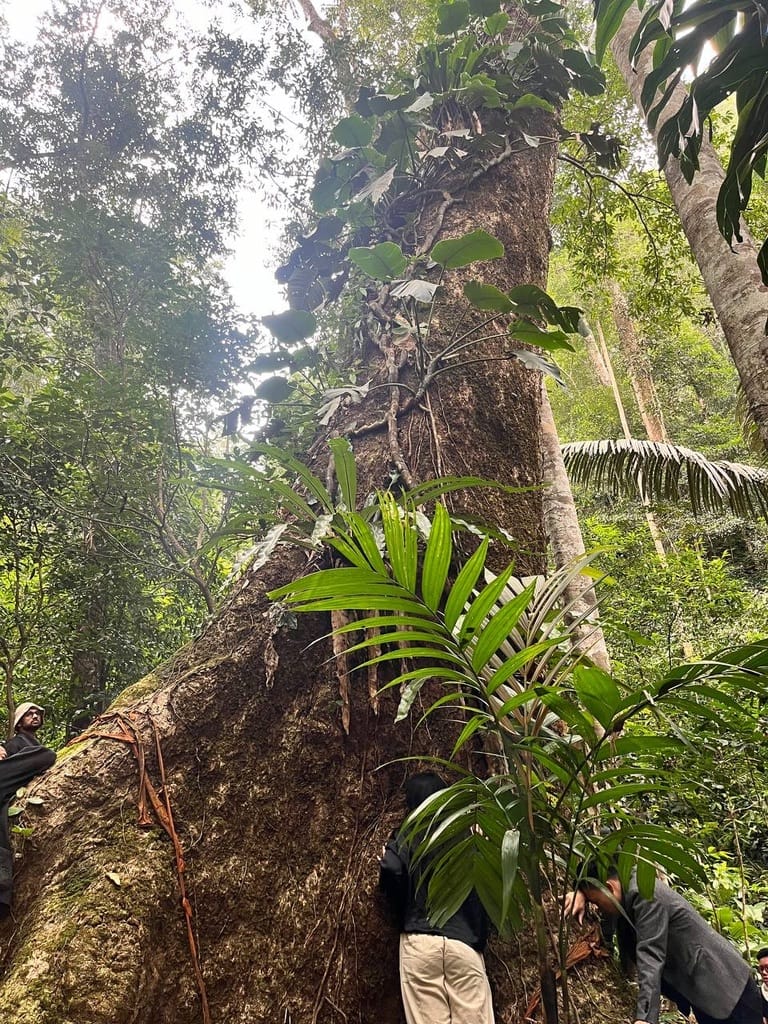
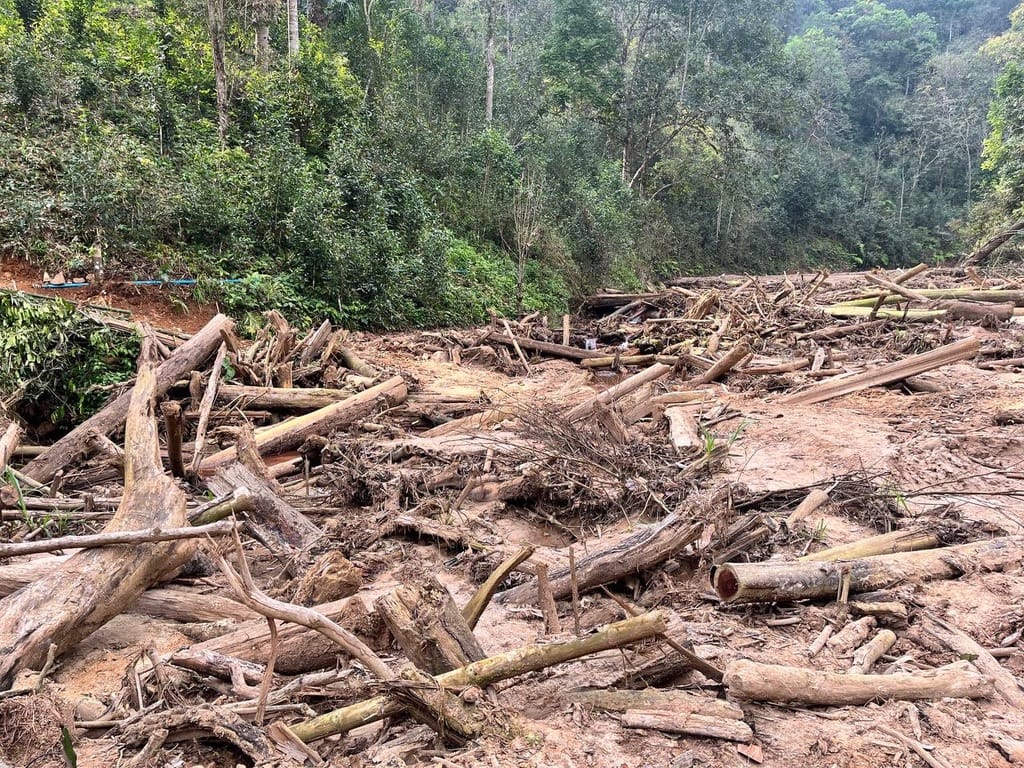
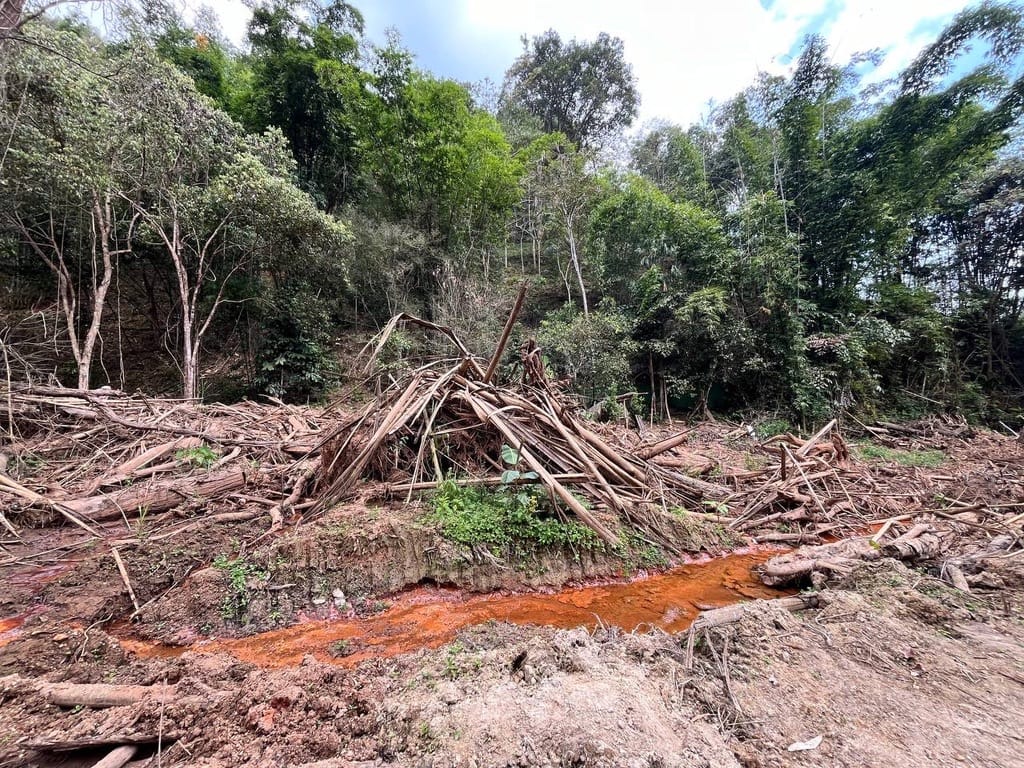
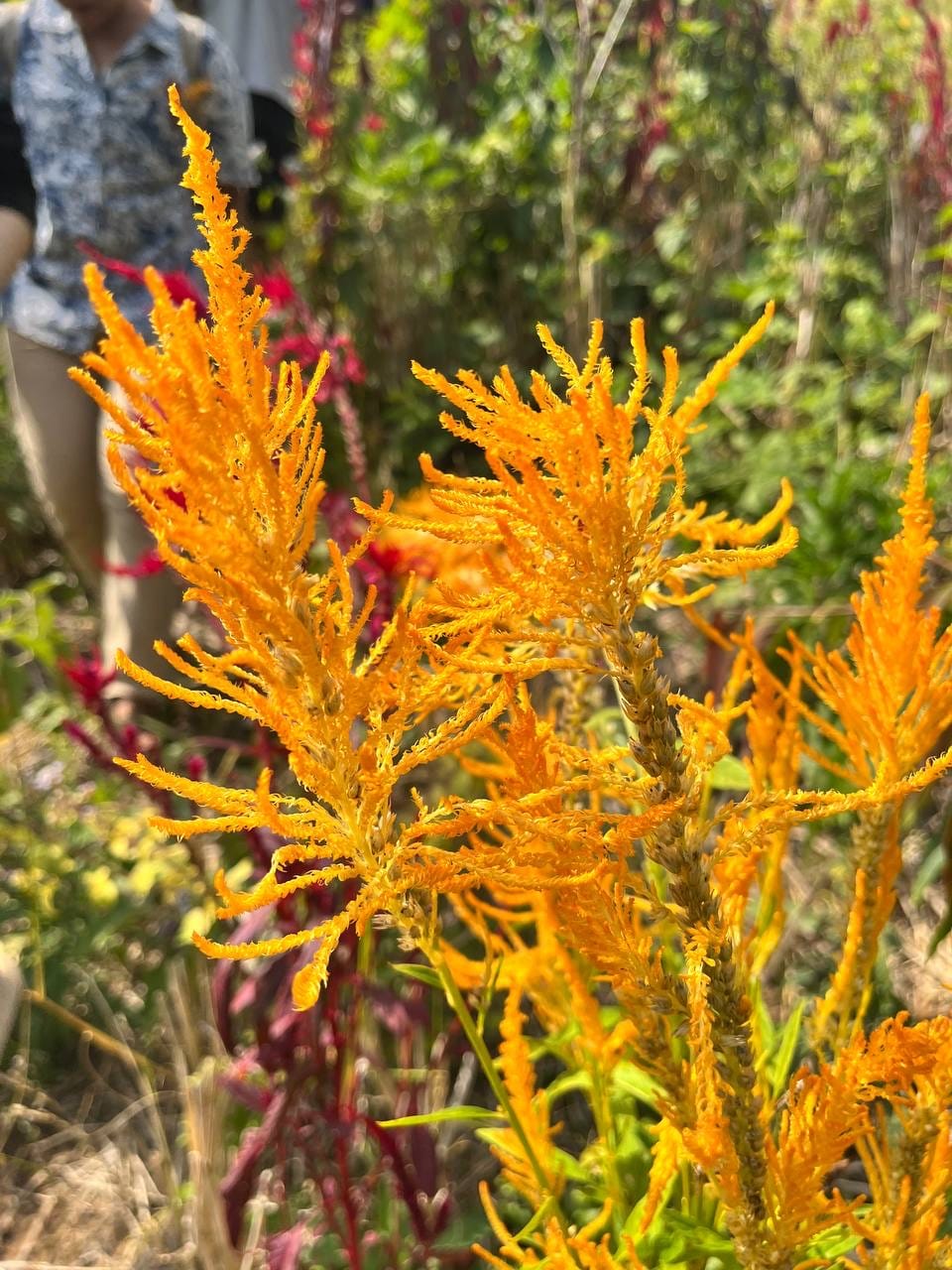
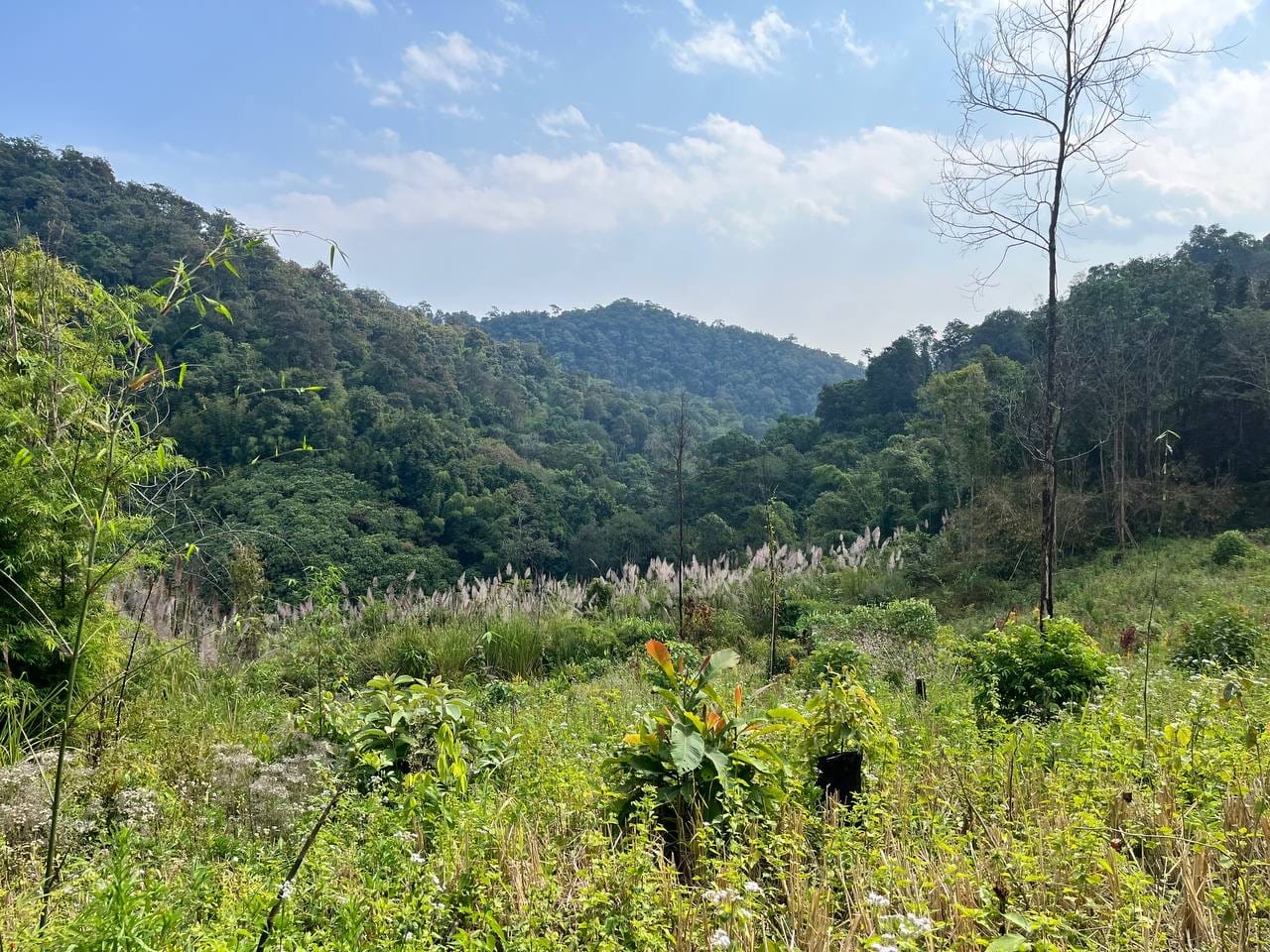
(top left to right) grandmother tree and aftermath of the floods (bottom): rotational forest garden
The ecology is changing. The forest was once abundant with trees which held deep roots and lived nearly a 1000 years. This kept the soil intact during heavy monsoons and guarded against landslides. Logging companies have felled most of these trees leaving a different variety of trees with relatively shallow roots and shorter life spans that leave the forest more succeptible to landslides. The kind of actions that come from people not living in right relation to the land.
The P’gakenyoa people of course had many rituals and traditions, forms of traditional ecological knowledge. They've developed simple yet sophisticated tactics to contain fires. They request nature for permission to grow and harvest. These yellow and red flowers (above) represented a yes from nature that it is time to harvest. They plant a bamboo stick into the ground and if it grows it indicates a yes from the land to go ahead and plant. They practise rotation farming, each plot of land is used for one year and gets 7 years to rest and regenerate before being used again. It was the first time I had seen rice grown alongside so many other vegetables and herbs, reminiscent of the way Fukukoa talks about farming in his book The One-Straw Revolution. Rototation or 'slash and burn farming' was maimed by the UN in 1957 for being 'backward' and recently blamed for contributing to Climate Change. Yet studies on the Hin Lat Nai show their forest absorbs signficantly more carbon than it releases and their ecological practises have helped regenerate about 80% of the forest over the last 30 years after logging had decemated the area. Thea Walmsley writes:
It also shows the absurdity of the view that many powerful development actors hold, that forest should either be “untouched” wilderness or used for industry, leaving no room for humans to engage in reciprocal relationships with the land (which is, ironically, how these “untouched” ecosystems were formed in the first place).
When we met with the grandmother tree, she sent a message to us via some of our friends that the still holds compassion for all of us. Do what we can to protect life around.
Space for Grief
Each day of the program led us deeper into the forest and into our own hearts, with the final day dedicated to grief. In this journey of remembering, I continue to reflect on my own dismemboring from the land of my birth and, in some cases, my own kin.
I took this Hin Lat Nai journey with my partner, Chiachi. One of our shared intentions for our relationship is to experience unfamiliar environments together. Being together during these days I realised how little space our regular day-to-day lives hold for experiencing sadness. The default is to spend time in places or doing activities that are meant to generate 'happy' states of being. If our partner is sad we feel we need to do something about it, or we feel guilty about not being good enough to lift them. We hide grief and guilt from ourselves. Eventually, we project them onto others, unable to deal with the difficulty of recognising it inside of us. Being together in such a village environment was new in itself. Allowing myself to experience sadness together in the company of another was very unfamiliar and required communication and intention. Having the physical company of a loved one is an easy distraction from sitting with our inner world and the emotions and stories they bring up. I observed how emotions and stories can arise and easily create distance. I also learned how sharing authentically can create a sense of rememberance in one 'holy instant'.
Learning and Unlearning Rituals
Growing up I found rituals to be mindless. Touching the the feet of someone senior, as we do in India, felt uncomfortable to me- why should I?
In temples in Thailand, the first step in meditation or any ceremony is prostrating to the Buddha. My old thought patterns would kick in until one day my teacher GD shared that we prostrate and place our head on the floor as a display of intention to surrender our mind. It clicked. The very mind that drives resistance is simply following its survival strategy of maintaining its dismembered identity and sense of specialness that dissolves in quiet and surrender. Now I feel the ritual. Growing up in this awkward time of modernity, we still have so many rituals that symbolize connection to the land. Yet I'm not sure most people, even the ones who do them with discipline, truly experience and feel into this connection. When a ritual becomes simply an action to be done to serve a set of rules around human codes of respect and morality, without intention or awareness, then it becomes empty, without any essence. Younger me was on to something, but too distracted to inquire further.
I feel that it would be limiting to look to revive the past through copy paste. Our world is fundamentaly different politically, socially, economically, and enviromentally. Many of us were born disconnected from land or chose to disconnect chasing dreams of modernity. Some of us choose to live nomadic lives with the ability to travel and work digitally. We seek community but we also need personal and private spaces to express ourselves. Changing climate or political conditions means many people will be forced to leave as refugees of some sort. In the invisible realm there are also energetic shifts taking place, an elevation in conciousness, a rebalancing to the Yin feminine, measured in cycles that span hundreds and even thousands of years.
The rituals from the past or ways of relating that worked in the past may not be the ones that will take us into a future of living in right relation with the land. Many of us choose not to follow the dotted line paths that our parents or ancestors did. We chose to make fresh paths because we've seen how the old paths do not serve us. How do we remember and live in right relation?
We will really have to learn to listen deeply. We may have to do what our ancestors did when they first gave birth to the rituals. Learn how to listen to ourselves. Learn how to listen to the trees and cultivate fresh relationships with life around us in the place we now live. Learn from the few people left that still live in right relation before we innovate. We will have to remember that ultimately, beyond the illusion of space and time, we are simply one. We've simply forgotten but the memory still resides within us. We will have to harness the power of what Tyson Yunkaporta in Sand Talk describes as Story Mind:
the power of 'story mind' is about the role of narrative in memory and knowledge transmission. It is the most powerful tool of memorization that kept indegenious communities intact for generations.
The narrative power of story mind reverbarated in our conversations with the group, following the (highly shorted) story Greg shared with us about a Raggedy boy. An orphan boy who experienced deep love and union with a goddess that birthed corn into the world. With this he would become a rich man but he forgot about his love, like we do a dream. As he gradually awoke to his forgetting he would spend the rest of his days until death in a journey to remember. The essense of the story, that the only thing we have to 'do' is to remember is the same I've heard from my teacher and from the ancients of Christianity, Sufism, Advaita, Daoism, and Buddhism.
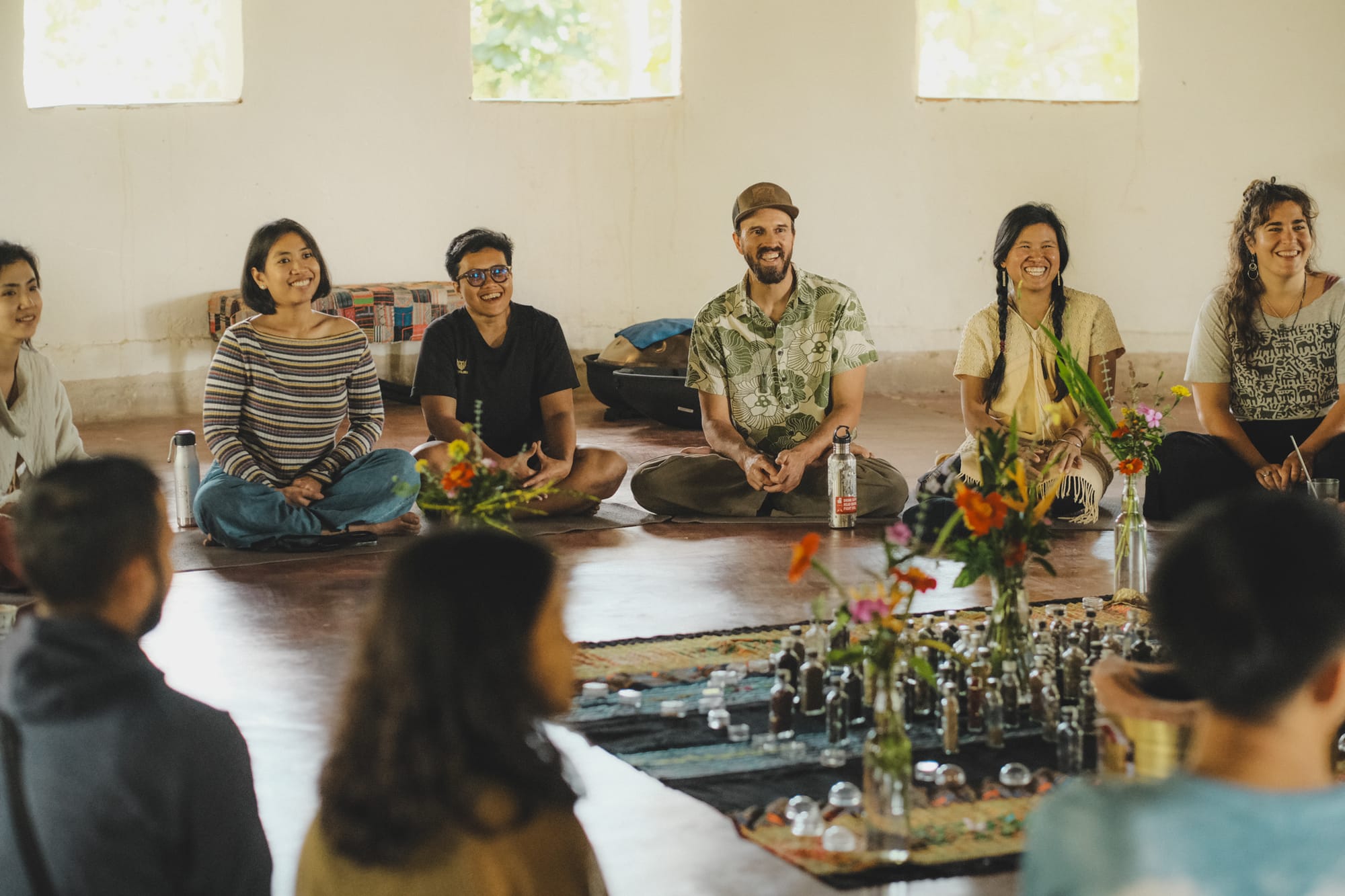
I'm grateful to have come across beings like Greg and Rumphai to facilitate this journey and introduced us to the P’gakenyoa people that they've cultivated relationships with over many years. I'm grateful to the P’gakenyoa for remembering so that they can share their stories with us and keep our forests alive. I'm grateful for the kinships formed between cohort. Together we remembered. And we will keep helping each from forgetting again.
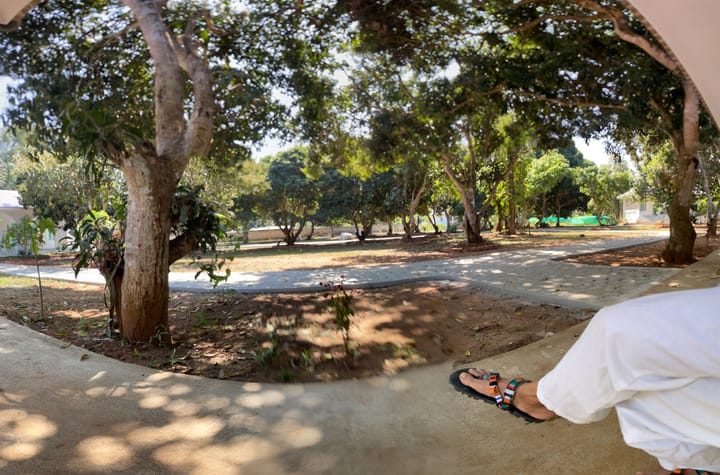
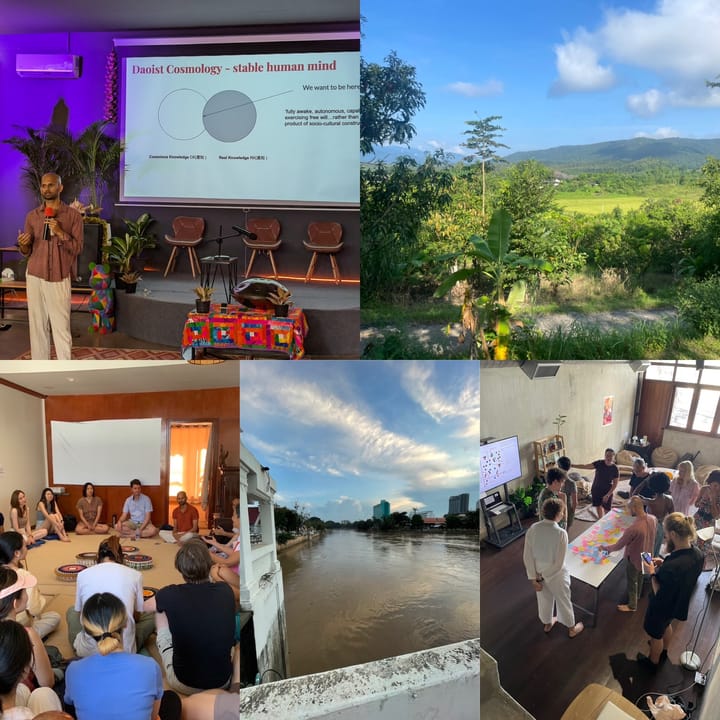
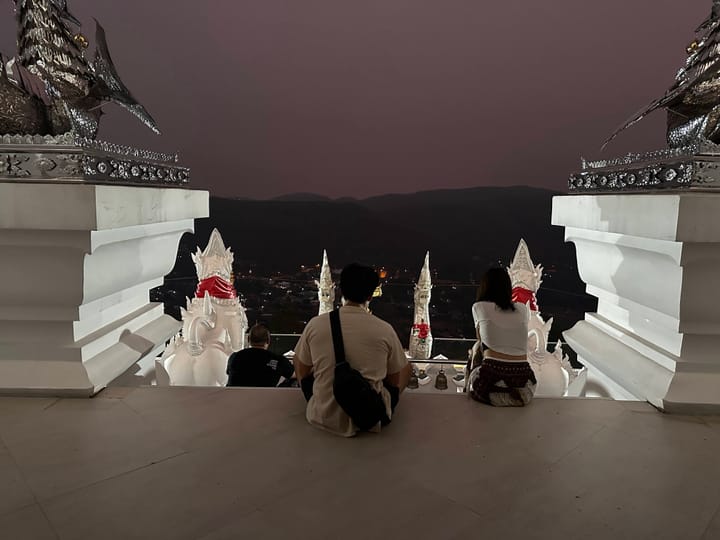
Comments ()